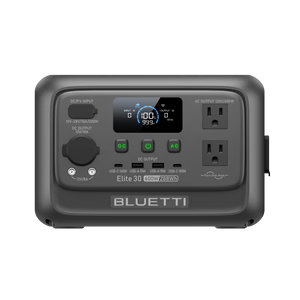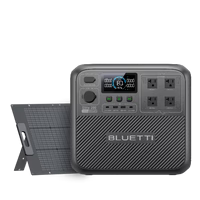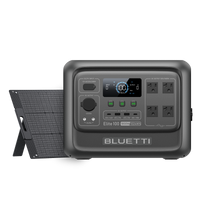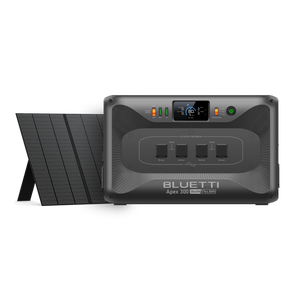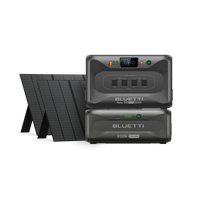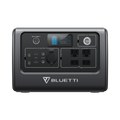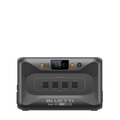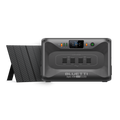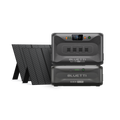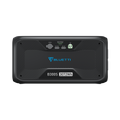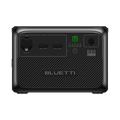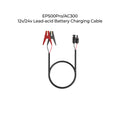Qu'est-ce que LiFePO₄ ?
Le phosphate de fer lithium (LiFePO₄ ou « LFP ») est le matériau de cathode le plus sûr et le plus stable pour les batteries lithium-ion, offrant des performances électrochimiques optimales et une faible résistance.
La batterie LiFePO4 est-elle meilleure que la batterie lithium-ion ?
La réponse est oui ; les batteries LiFePO4 sont supérieures aux batteries lithium-ion traditionnelles pour plusieurs raisons. Le LiFePO4, également appelé LFP, est plus efficace, offre davantage de cycles de charge, dure plus longtemps, est beaucoup plus sûr et a un impact environnemental et social bien moindre que les batteries lithium-ion traditionnelles, également appelées NMC.
Voyons les raisons pour lesquelles les batteries LiFePO4 sont supérieures aux batteries lithium-ion ou NMC.
Pourquoi les batteries Lifepo4 sont-elles meilleures que les batteries lithium-ion ?
Les batteries LiFePO4 surpassent les batteries lithium-ion traditionnelles sur plusieurs aspects clés, ce qui en fait un choix privilégié pour diverses applications. Continuez à lire :
Les batteries LiFePO4 sont plus sûres car elles sont chimiquement plus stables
La chimie traditionnelle des batteries lithium-ion a conduit à penser que toutes les batteries au lithium étaient dangereuses. Elles sont constituées de cathodes de cobalt moins stables qui, soumises à une surcharge, une surchauffe, des dommages ou d'autres contraintes, commencent à se dégrader, libérant une chaleur excessive, pouvant entraîner un emballement thermique et une inflammation. Les images que vous avez vues en ligne de batteries au lithium qui explosent ou brûlent sont de ce type.
D'autre part, la technologie LiFePO4 utilise des liaisons phosphate (PO4) beaucoup plus stables qui libèrent leurs atomes d'oxygène plus lentement, empêchant ainsi l'emballement thermique et l'inflammation dans tous les cas sauf les plus extrêmes (par exemple, ne les placez pas à côté d'un feu).
Plus de cycles de charge = durée de vie plus longue
Batteries LiFePO4 Ils offrent également un nombre plus élevé de cycles de charge, ce qui signifie qu'ils dureront plus longtemps car vous pourrez les charger plus de fois.
La plupart des batteries LFP peuvent être rechargées au moins 3 000 fois avant de montrer des signes significatifs de baisse de capacité. Dans des conditions optimales, elles peuvent même être rechargées deux fois plus souvent, ce qui leur permet de durer de nombreuses années.
Bien que les modèles lithium-ion aient des cycles de charge beaucoup plus élevés que les modèles plomb-acide traditionnels, ils ne peuvent être chargés qu'entre 1 000 et 2 300 fois, ils ne dureront donc pas aussi longtemps qu'une batterie LFP.
Densité énergétique
La densité énergétique d’une batterie fait référence à la quantité d’énergie pouvant être stockée en fonction du poids.
Par rapport aux batteries au plomb, les batteries LiFePO4 stockent la même quantité d'énergie dans un volume 50 % inférieur, ce qui les rend beaucoup plus petites et plus légères.
Cependant, c'est une catégorie où la NMC l'emporte, car la densité énergétique de la LFP est environ 14 % inférieure à celle des batteries lithium-ion au cobalt. La différence n'est pas si importante et, comparées au plomb-acide, elles sont toutes deux excellentes. L'achat d'une batterie LFP légèrement plus grande peut vous offrir une capacité totale légèrement supérieure si nécessaire.
Tension
Les LFP ayant une densité énergétique légèrement inférieure, leur tension est également légèrement inférieure (environ 3,2 V par cellule) à celle d'une batterie NMC, ce qui signifie qu'il faut plus de cellules pour atteindre la même tension. Cependant, la batterie lithium-ion affiche généralement environ 3,7 V par cellule ; la différence n'est donc pas si importante. Vous pouvez néanmoins obtenir un peu plus de puissance si nécessaire en achetant une batterie légèrement plus grande.
Température de fonctionnement

La température de fonctionnement d'une batterie est la plage de température à laquelle elle continuera à fonctionner correctement.
Le LiFePO4 peut fonctionner efficacement à des températures comprises entre -20 °C (-4 °F) et 60 °C (140 °F). En revanche, le lithium-ion a une plage de températures de fonctionnement beaucoup plus étroite, optimale entre 15 °C (59 °F) et 35 °C (95 °F). Ceci est particulièrement important si vous souhaitez que vos batteries fonctionnent pendant les hivers rigoureux du Canada. Dans ce cas, les nouveaux modèles LFP sont clairement les gagnants.
Température de stockage
La température de stockage optimale se situe à peu près dans la même plage que la température de fonctionnement. Pour une batterie NMC, il est préférable de la stocker entre 15 °C (59 °F) et 35 °C (95 °F). Un stockage à des températures plus basses ralentit les réactions chimiques internes et entraîne une perte de capacité. Stocker des batteries lithium-ion à plus de 35 °C (95 °F) peut constituer un risque sérieux pour la sécurité, car elles sont notoirement sujettes à l'emballement thermique et à l'inflammation (combustion et explosion).
D'autre part, le LiFePO4 peut être stocké entre -20°C (-4°F) et 60°C (140°F), ce qui vous offre une fenêtre de stockage beaucoup plus large et plus sûre sans perte de capacité ni provoquer d'emballement thermique ou d'inflammation.
Faible autodécharge
Les batteries LiFePO4 présentent un faible taux d'autodécharge, ne perdant qu'environ 2 % de leur puissance par mois lors du stockage. Elles constituent donc le choix idéal pour systèmes de sauvegarde à domicile, où ils peuvent être stockés pendant des mois avant de devoir être utilisés. Grâce à leur faible taux de décharge, ils auront toujours de l'énergie lorsque vous en aurez le plus besoin.
Le taux d'autodécharge d'une batterie lithium-ion est environ deux fois supérieur à celui d'une batterie LiFePO4, soit environ 4 % par mois. Cependant, ce chiffre reste incroyablement faible par rapport aux batteries au plomb-acide qui se déchargent d'elles-mêmes à environ 30 % par mois, ce qui en fait un très mauvais choix pour un système de secours domestique.
Coût d'achat
Grâce à leur technologie plus récente, les batteries LiFePO4 étaient autrefois plus chères à l'achat que les anciens modèles NMC. Cependant, leur demande a considérablement augmenté grâce à leur meilleure qualité, et leur production est donc plus importante que jamais. Leur coût a donc rapidement chuté. En 2023, les batteries LFP sont devenues moins chères que les NMC, coûtant en moyenne 32 % de moins. Une excellente nouvelle pour nous et pour l'environnement !
Coûts environnementaux et sociaux
Bien que les deux batteries soient fabriquées au lithium, les batteries NMC contiennent également du cobalt et du nickel toxiques, ce qui entraîne des coûts environnementaux bien plus élevés. L'extraction de ces métaux est très énergivore et les procédés utilisés peuvent être extrêmement nocifs pour l'environnement et les communautés locales.
L'extraction du cobalt, en particulier, est non seulement coûteuse pour l'environnement, mais aussi associée à de graves coûts sociaux en République démocratique du Congo et en Afrique centrale, où se trouvent la plupart des réserves mondiales. Dans ces régions, elle est associée à des taux élevés de violence, de toxicomanie, d'insécurité alimentaire et hydrique, ainsi qu'à des problèmes de santé physique et mentale. De plus, les agriculteurs perdent leurs maisons et leurs terres, qui sont démolies et creusées pour extraire le cobalt.
Les batteries LiFePO4 n'utilisent ni cobalt ni nickel et utilisent à la place du fer et du phosphate beaucoup plus facilement disponibles et respectueux de l'environnement.
Articles connexes : Capacité de la batterie : un guide pour comprendre
Combien de temps dure une batterie de maison solaire ?
Meilleur système de batterie solaire de secours pour la maison au Canada (2024)
Alimentation de secours à domicile grâce aux batteries LiFePO4
Si vous recherchez une alimentation de secours domestique fiable qui sera toujours prête lorsque vous en aurez besoin, alors l'alimentation de secours utilisant des batteries LiFePO4 est la solution idéale. On ne sait jamais quand une panne de courant peut survenir suite à un dysfonctionnement technique, un accident ou une météo extrême. Les batteries LFP vous rassureront : vous aurez toujours une solution de secours efficace !
Jetons un œil à l'une des options de sauvegarde à domicile les plus populaires proposées par BLUETTI.
BLUETTI AC300 + 1*B300 Batterie de secours pour toute la maison

Le BLUETTI AC300 + 1*B300 Batterie de secours pour toute la maison est le choix parfait pour ceux qui recherchent une solution de secours domestique complète de qualité et fiable pour vous aider à traverser ces hivers canadiens froids en cas de panne de courant causée par des tempêtes hivernales.
Puisqu'ils sont extensibles, ils permettent d'ajouter jusqu'à 3 supplémentaires Batteries d'extension B300, vous pouvez obtenir suffisamment d'énergie pour faire fonctionner une maison entière avec de nombreux appareils, même une sécheuse !
Spécifications
- Onduleur sinusoïdal pur 3 000 W CA (surtension 6 000 W)
- Capacité de 3 072 Wh (extensible jusqu'à 4 × B300 pour 12 288 Wh)
- Batterie LiFePO4 avec plus de 3 500 cycles de vie à 80 %
- Liaison de phase divisée 240 V (avec *2 AC300 et *2 B300)
- UPS Home Backup 24h/24 et 7j/7
- 7 façons de recharger (CA/Solaire/Voiture/Générateur/Batterie plomb-acide/Double CA/CA+Solaire)
- Puissance solaire maximale de 2 400 W
- Charge double ultra rapide de 5 400 W max (solaire + CA)

Si votre panne dure plusieurs jours, vous pouvez facilement connecter votre BLUETTI AC300 à certains Panneaux solaires BLUETTI PV420 et maintenez votre maison en marche indéfiniment, pour que vous n'ayez plus jamais à vous soucier des pannes de courant.
Solutions d'alimentation portables utilisant des batteries LiFePO4
Si vous voulez quelque chose de plus portable, vous ne voudrez pas chercher plus loin que les centrales électriques portables qui utilisent des technologies LiFePO4 supérieures. Ces batteries vous permettront de rester alimenté à l'intérieur comme à l'extérieur, par tous les temps et dans tous les lieux. Avec la technologie LFP, les limites sont quasiment illimitées !
Centrale électrique solaire portable BLUETTI AC180

Si vous recherchez un plus solution d'alimentation portable pour une utilisation à l'intérieur ou à l'extérieur, sur la route, pour travailler ou jouer à l'extérieur, ou pour les situations d'urgence où vous pourriez avoir besoin de déplacer votre alimentation, le Centrale électrique solaire portable BLUETTI AC180 est un gagnant avéré.
Avec un poids de seulement 16,4 kg (36,16 lb), il est suffisamment léger pour être transporté partout où vous en avez besoin. Vous pouvez charger plusieurs appareils simultanément grâce à ses 11 ports de sortie CA, CC, USB-A et USB-C.
Grâce à sa capacité de 1 800 W et à son mode musculation de 2 700 W, ce modèle portable offre une puissance considérable dans un format compact. Il peut alimenter des appareils puissants comme des radiateurs d'appoint, des sèche-cheveux, des bouilloires électriques, des couvertures chauffantes, etc. Une polyvalence exceptionnelle dans un format compact !
Spécifications
- Puissance de sortie CA de 1 800 W/Mode de levage de puissance de 2 700 W
- Capacité : 1 152 Wh (AC180)/1 440 Wh (AC180P)
- 11 ports de sortie pour plusieurs appareils
- 4 modes de recharge flexibles (CA/Solaire/Voiture/Générateur)
- Contrôle et surveillance intelligents avec l'application BLUETTI
- Recharge de 0 à 80 % en 45 minutes avec une entrée CA de 1 440 W
- Écologique/Propre/Silencieux/Rentable
Les batteries LiFePO4 offrent des performances supérieures
De toute évidence, les batteries LiFePO4 offrent des performances supérieures dans presque toutes les catégories. Leur sécurité est sans doute supérieure, leur utilisation et leur stockage étant incroyablement sûrs dans des conditions bien plus variées que les anciens modèles lithium-ion.
Les batteries LFP présentent un taux d'autodécharge plus faible et un plus grand nombre de cycles de charge, ce qui leur confère une durée de vie plus longue. Leur coût environnemental et social est également réduit grâce à leur composition chimique plus propre, et elles coûtent même moins cher que jamais !
Les seuls domaines où la batterie lithium-ion est supérieure sont les propriétés connexes de densité énergétique et de tension. Cependant, la différence étant minime, vous pouvez acheter une batterie légèrement plus grande si vous avez besoin d'un peu plus de puissance. Ce surcoût sera largement compensé par les économies réalisées grâce à sa durée de vie plus longue et à sa polyvalence de performances par rapport à la NMC.
L’achat de batteries LiFePO4 de qualité vous garantira beaucoup d’énergie pour les années à venir !
